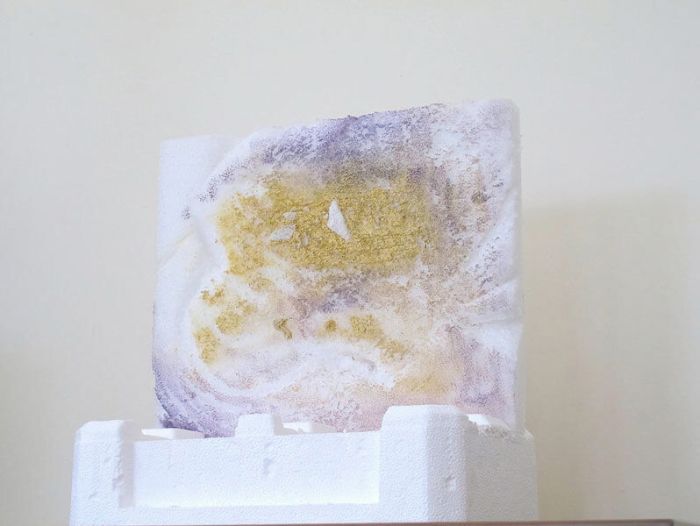By Kevin Zimmerman
Near the end of Queens College Art Center’s new exhibit hang six photographic images that at first glance seem pretty unfriendly.
The piece, by French artists Filomenia Borecka and Caroline Gillot, is titled “Duel” and shows the hands of two individuals engaged in a game of Rock, Paper, Scissors. But take a closer look and you see two of the images capture the individuals clasping hands in a greeting.
“You have the conflict of the Rock, Paper, Scissors, but in between you have the images of their real friendships,” Suzanna Simor, director of the college’s art center, said.
For Simor, “Duel” embodies the essence of what she and her co-curators Tara Mathison and Alexandra de Luis hoped to capture in their show “Friendly Gestures [namaste]” now on display at the Rosenthal Library, 65-30 Kissena Blvd. in Flushing, through the end of June.
As part of the college’s annual celebration of the cultural diversity in the borough, Friendly Gestures is part of “The Year of India,” which includes special events, courses and visits related to the Asian subcontinent.
“India is a very influential country now,” Simor said. “This show doesn’t present the country, but it presents ideas of the country. It is something human that connects us all.”
Namaste, which translates from Sanskrit as “my spirit bows to your form,” is something uttered along with a head nod and clasping of one’s hands, Simor said. But she points out it does not have to be something someone says to another friend. It could just as easily be a greeting made to nature, to one’s enemies or to the world, Simor said.
“It is something that leads to respect of everything,” Simor said. “This is a theme of global respect that is inclusive. These are not the friendliest of times around the globe, but we all had better find a way to live together on this planet and not mess it up.”
The 22 pieces in the show each address the theme of respect through a variety of mediums that at first glance do not seem cohesive.
On a small computer screen images from Pawel Wojtasik’s video “At the Still Point” play on an endless loop. In the first part, mourners prepare a body for its trip down the Ganges River. The second short, which takes place along a river in Mumbai, shows dozens of men cleaning garments by beating each with rocks like their ancestors have done for centuries. Haunting music accompanies images in both films.
“This bridges the spiritual and ritual of life and death with the practical of daily life,” Simor said.
In his artist’s statement to accompany this submission, Wojtasik writes that “making art is about facing fear — the fear of death, of pain, of loss, even the fear of seeing certain kinds of imagery on screen.”
In “Solace Revisited,” Leslie Shaw Zadoian takes leftovers such as metal scraps and bits of wood and by using different color paints creates a piece that “speaks of respect to nature,” Simor said.
“She takes the humblest of castoffs and treats them with gold and silver and makes them precious,” Simor said.
In her artist’s statement, Zadoian writes “the artist’s mission is to make beauty that never before existed.” She does this, she states, by finding beauty and formal elegance in rather unlikely places and combinations.
Andy Slemenda also finds art where most of us see trash. His “Likewise Painting, Mold and Lichen” consists of Styrofoam packaging sporting the deep rich colors associated with royalty.
“It is such a metaphor,” Simor said. “It is totally throw-away material that he puts through this treatment with purple and gold.”
As he relates in his artist’s statement, Slemenda sees his work as both of the spirit and of the body. He believes this “comments on how we negotiate our consciousness and the physical world, interrelated to Hinduism and the salutation form, Namaste.”
Although each of the nearly two dozen works addresses the overall theme of needing to connect to today’s world, Simor understands at first glance the show could seem, like the photos from “Duel,” contradictory or even as she labels it, “a hodgepodge.”
“You leave with questions and hardly any answers,” Simor said. “But one has to provide one’s own answers.”
If you go
“Friendly Gestures [namaste]”
Benjamin Rosenthal Library Level 6 at Queens College
65-30 Kissena Blvd., Flushing
Monday – Thursday, 9 a.m. to 9 p.m. and Friday, 9 a.m. to 5 p.m. through June 27
(718) 997-3770






































